You're just 1 hour and 2 ingredients away from fresh Indian cheese.
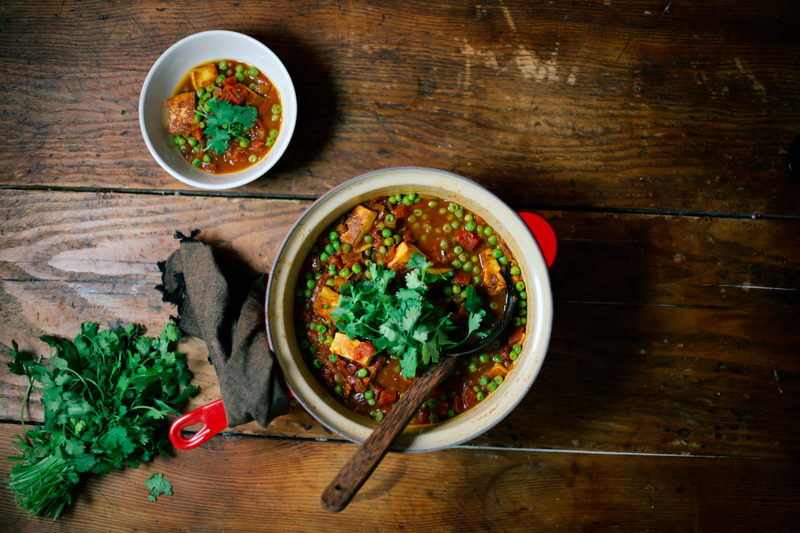
When I think of cheese, Indian food rarely comes to mind. But there is one type of cheese that stands out in Indian cooking. It’s easy to make and, depending on how you process and flavor it, it can be used in sweet and savory dishes. That cheese is paneer, and unlike its western counterparts, it doesn’t melt when heated, which means it maintains its texture and structure even when cooked. Much like Halloumi, paneer can be skewered, marinated, and grilled.
In many ways, paneer reminds me of tofu: It absorbs the flavors of any dish it is cooked in, and you can crumble it or cut it into cubes or any shape you desire. Paneer is sometimes described as Indian cottage cheese, but I’m hesitant to describe it as such—not only do the two have different tastes and textures (cottage cheese is rather loose, whereas paneer is firm), they are also made differently (rennet is used to curdle the milk to prepare cottage cheese).
In making paneer, heat and acid help transform the proteins in the milk into cheese curds. When I make paneer at home, I like to start with either whole or low-fat milk (traditionally, paneer is made with whole cow's or buffalo's milk). I recommend avoiding non-fat milk: You need the fat to bind the proteins together once the dairy has coagulated and been pressed to form a cake. And though you can curdle the milk with an acid like vinegar, I love using fresh lemon juice because it gives the cheese a fresh flavor and taste (some people also use lime juice).
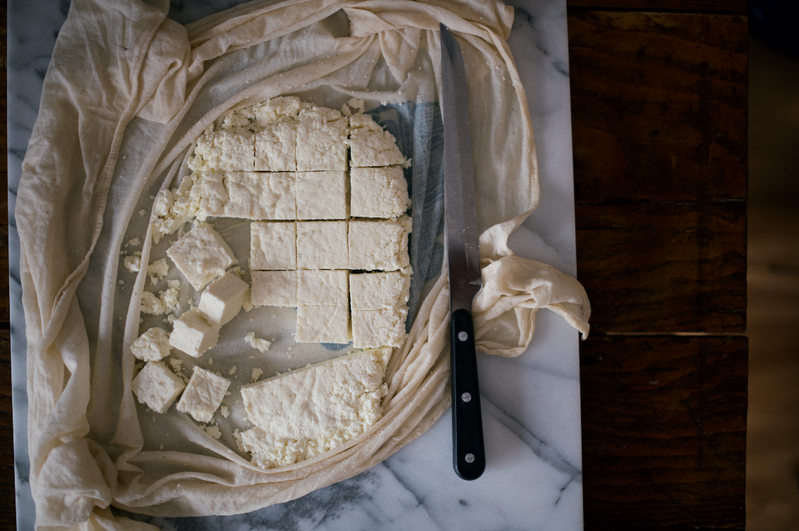
Once the curds are washed and drained, you will find the cheese that's left behind in the cloth resembles fine crumbs. These fine crumbs are also called chenna and are used to prepare Indian desserts such as rasgulla, Sandesh, and ras malai. To prepare paneer and shape it into a cake, I press the cloth containing the drained cheese with a heavy weight and let it sit for about an hour to help press the contents together. The disc of paneer that forms can be easily cut into cubes or rectangles and used as is, or lightly fried and folded into sauces or broths.
There are several Indian savory dishes that use paneer (you'll often find it diced or cubed in dal, salads, and cooked vegetables), and one of my favorites is matter paneer. In this dish, paneer is cooked along with peas in a tangy tomato sauce. Paneer korma and palak paneer (also called saag paneer) are other popular Indian dishes that you'll see on the menus of many restaurants—but don't limit yourself: Paneer is such a versatile treat; I’ve used it on breakfast skillet naans and I've also seared it with tea and pineapple dressing.
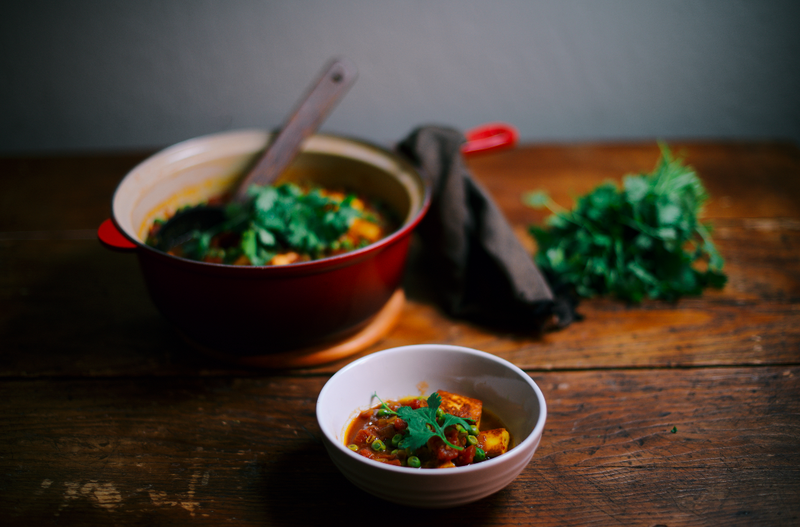
Homemade Paneer (Fresh Indian Cheese)
Makes about 2 1/2 to 3 cups
1 gallon whole or 2% milk
1/2 cup freshly squeezed and strained lemon juice, divided (you might not need to use all the juice)
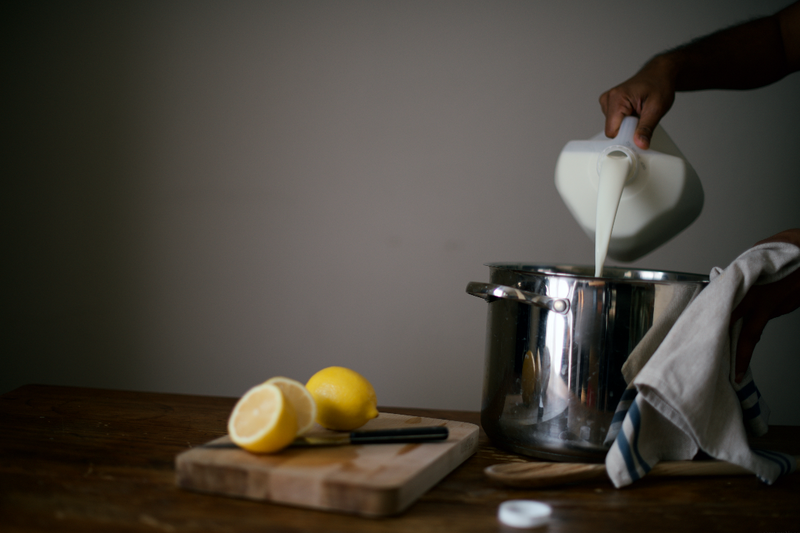
Pour the milk into a large thick bottomed stockpot and bring the milk to a rolling boil on medium-high heat while constantly stirring with a large wooden spoon or Silicone spatula. Once the milk starts to boil, pour in half of the lemon juice and stir. The milk will start to curdle.
If the whey (the watery liquid that separates from the solid cheese curds) still looks slightly milky, add a little more lemon juice. The whey will be slightly yellowish-green in color while the cheese curds will separate and float to the top.

Remove the pot from the stove and drain the contents into a colander or sieve lined with a clean piece of dampened kitchen cloth or a few layers of cheesecloth placed over a large bowl or pot. Discard the whey that collects in the bowl and wash the curds by running cold tap water over the cheese in the cloth. Wash at least 3 times to get rid of any residual lemon juice that might be trapped in the cheese curds.
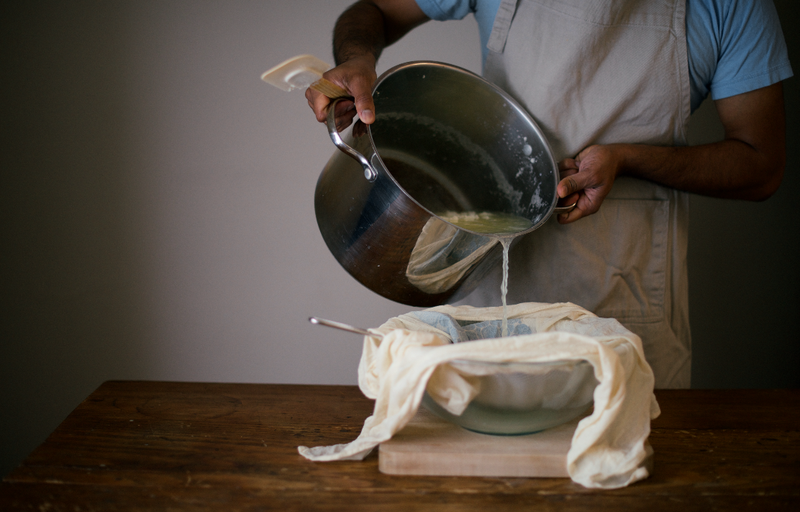
Once this is done, tie the ends of the cheesecloth/kitchen cloth and squeeze to release any extra liquid out of the cheese. The cheese/paneer inside the cheesecloth will be appear to resemble crumbs.
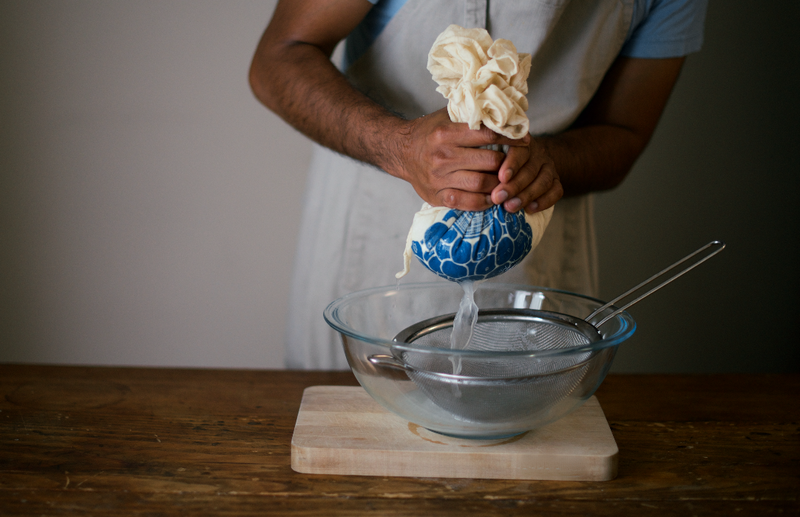
To set the paneer into a more firm cake, place a large heavy pot filled with water over the cheesecloth containing the paneer and let it sit for one hour at room temperature on a flat surface. The weight will help pack the paneer into a tight and firm structure.

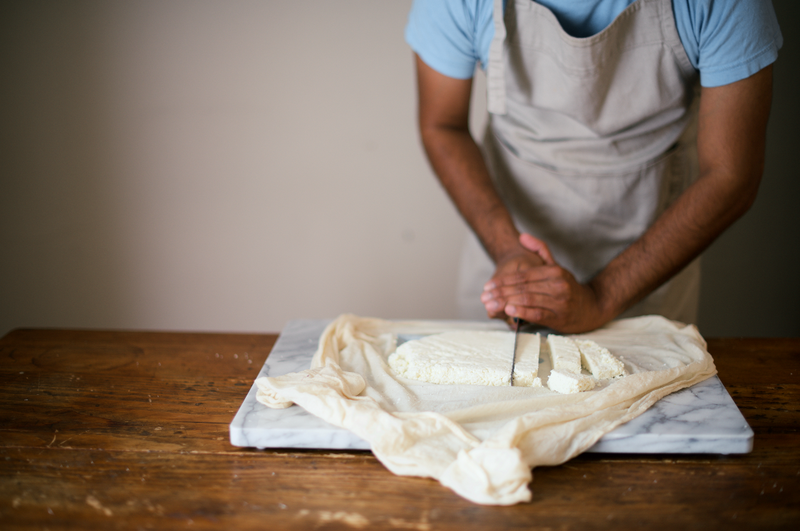
Unwrap the cheesecloth and cut the paneer into 1- by 1 1/2-inch rectangles (or any shape or size you like) and store in the refrigerator in an airtight container for up to a week. You can also freeze the paneer for long-term storage by wrapping it in plastic wrap and then storing it in an airtight plastic bag.
Once, you've made the paneer, it's time to put it to use. Fry it, then add it to mattar paneer (my recipe follows) or saag paneer, or use it to garnish lentil soup.
Mattar Paneer
Serves 4 to 6
12 ounces paneer
1/4 cup vegetable oil or ghee for frying the paneer (optional) plus 2 tablespoons, divided
2 cups finely diced red onion
2 tablespoons peeled and grated ginger
1 teaspoon peeled and grated garlic
1 teaspoon ground coriander
1 teaspoon turmeric
1 1/2 teaspoons red chili powder
1/2 teaspoon freshly ground black pepper
1 teaspoon garam masala
12 ounces canned crushed tomatoes with juice
3 cups shelled pea (frozen or fresh)
1 1/2 teaspoons fine-grain sea salt
1/4 cup loosely packed fresh cilantro, for garnish
See the full recipe (and save and print it) here.
Photos by Nik Sharma










See what other Food52 readers are saying.